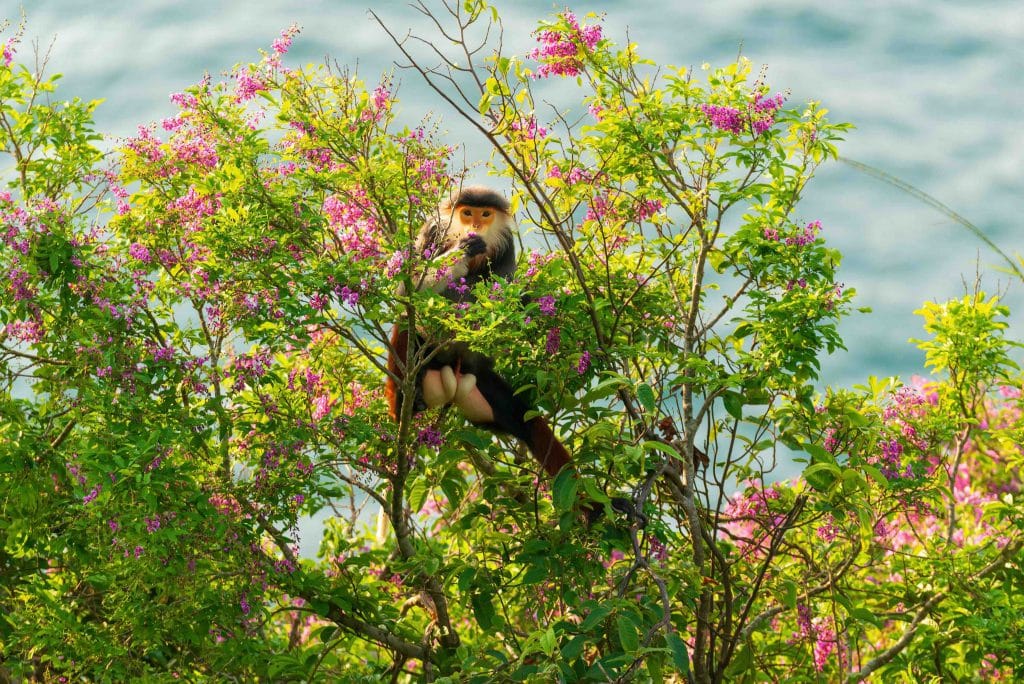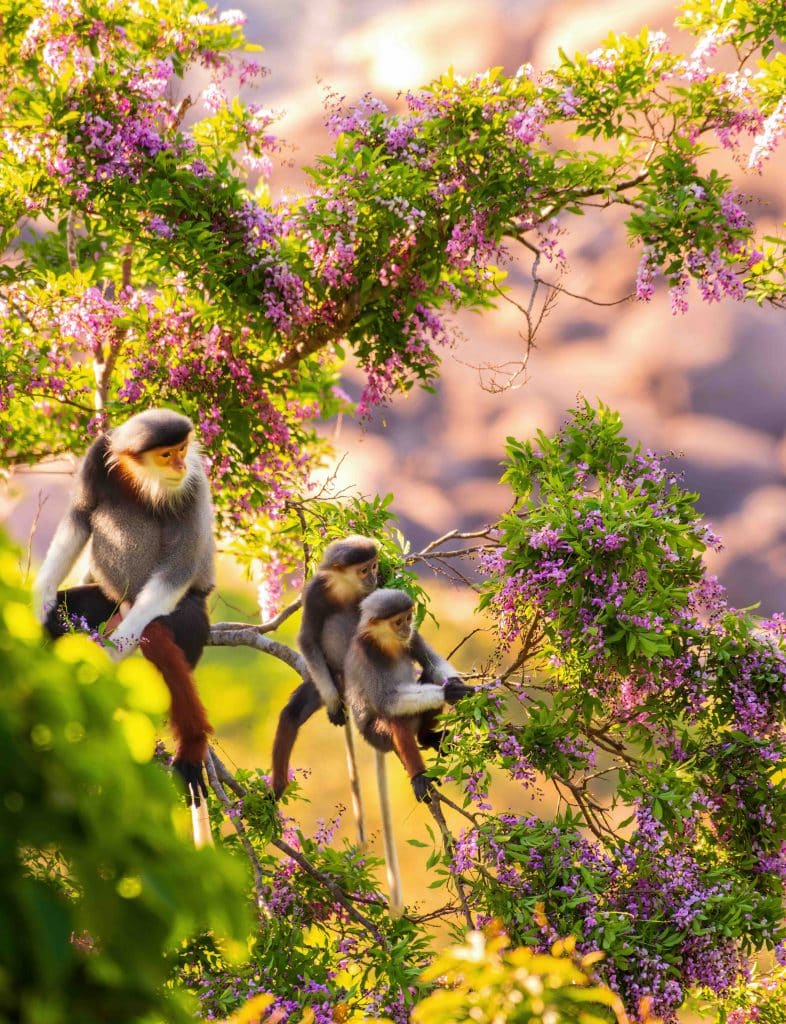Story: Le Anh
Photos: Nguyen Sanh Quoc Huy
Amid a sea of violet blossoms, red-shanked douc langurs grace the forests of the Son Tra Nature Reserve with their presence.
Many ancient texts have noted the rare natural beauty of Son Tra—once an island near the mouth of Danang Bay. Over time, alluvial deposits created a strip of land connecting the island to the mainland, forming what is now the Son Tra Peninsula. Here, a lush blanket of moist primary tropical rainforest has been preserved to this day. Its terrain and climate provide an ideal habitat for various primate species. The local nickname “Monkey Mountain” likely stems from this abundance of primates, one of the peninsula’s most distinctive features. Today, Son Tra is a Nature Reserve covering more than 4,000 hectares, with its highest peak reaching nearly 700 meters above sea level. It is home to nearly 1,700 species of flora and fauna, many of which are listed in the IUCN Red List and Vietnam’s own Red Data Book. Notably, both scientists and the public associate this area with the red-shanked douc langur, since a relatively large population of these creatures live here and can often be observed by visitors.

The red-shanked douc langur is revered as the “queen of primates” for its striking beauty and vibrant five-colored coat, which stands out brilliantly against the green forest backdrop. Nature has given this species a remarkably unique appearance: a bright yellow face framed by a halo of white fur, forearms like white gloves, legs that resemble reddish-brown stockings, and hands and feet of inky black. The rest of the body is cloaked in soft gray fur. The juveniles look adorable clinging to their mothers, whereas the adults exude sophistication as they swiftly leap from branch to branch, their eyes constantly scanning for food or potential danger.
Red-shanked douc langurs typically live in groups of around ten individuals, led by a dominant adult male. Their diet consists mainly of fruits, seeds, and especially young leaves. With a preference for tender foliage, when spring arrives and the forest begins to bud, the langur troops often move to lower elevations to forage for fresh shoots. At this time of year, wildlife enthusiasts should not miss the chance to observe the douc langurs in the lush, green wilderness of Son Tra. During the flowering seasons, the landscape becomes especially poetic and full of life, drawing large numbers of visitors and photographers from across the country, and beyond. In March, the forest puts on a fresh, vibrant green cloak. Soon after, two blooming seasons follow in quick succession, with yellow flame trees and violet than mat (Millettia Ichthyochtona) flowers dressing Son Tra in different colors. The radiant blossoms of the yellow flame trees brighten the landscape through late April, while in May, the forest is transformed by the violet blooms of than mat trees—turning this area dreamy.

Photographer Nguyen Sanh Quoc Huy, a resident of Danang, explains that he and fellow photography enthusiasts often gather in small groups and spend entire days on Son Tra Peninsula, especially when the than mat trees are in flower. Following the langurs’ natural rhythms and feeding habits, the photographers typically focus their efforts around 6 a.m. and 3 p.m. Langurs are vigilant, always looking out for one another. At the slightest hint of danger, the lead male gives a signal, and the entire group swiftly retreats. “If you want to observe them, you must respect their space,” says Mr. Huy.
Each year, the blooming season brings its own unique charm, creating an impressive backdrop for every frame. The flower seasons of 2018 and 2024 were especially memorable for photographers, as dreamy blossoms blanketed the peninsula. Against this vibrant violet canvas, the red-shanked douc langurs appeared even more striking. Like many travelers and photographers from far and wide, Mr. Huy is eagerly looking forward to another breathtaking flower season, with the lively langurs once again standing out against the majestic mountainous backdrop of Son Tra.










